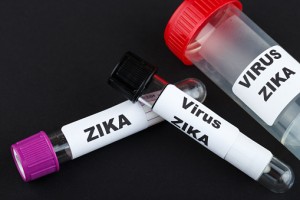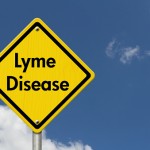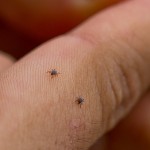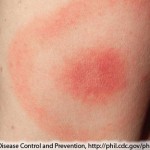

 Lyme disease and Zika virus are known as zoonotic diseases, meaning they come from animals and spread to humans. Both illnesses are currently on the rise in the U.S. and worldwide, so it’s important to have a good understanding of each in order to effectively protect yourself and your family.
Lyme disease and Zika virus are known as zoonotic diseases, meaning they come from animals and spread to humans. Both illnesses are currently on the rise in the U.S. and worldwide, so it’s important to have a good understanding of each in order to effectively protect yourself and your family.
Lyme disease is transmitted through tick bites, while Zika virus is spread by mosquitoes. Both can lead to very serious conditions and complications. Lyme disease can be contracted in the U.S. where the habitats for the ticks that spread Lyme disease can be found. Zika, on the other hand, is mainly spreading through the Central and South America, and although there are some American cases, too, there is no local transmission, as of yet.
Although Zika virus is constantly showing up in news headlines, you should probably be more concerned about Lyme disease. Zika virus is a more serious threat if you are travelling to countries with the infected mosquito. Lyme disease, on the other hand, is locally transmitted, so if you’re not careful you may actually develop Lyme disease way before you even run the risk of contracting Zika virus.
The prevalence of Lyme disease is growing, though providing any particular estimates is difficult for the CDC as many cases go unreported or are misdiagnosed for another condition.
Zika virus poses the largest threat to fetuses and pregnant women, but Lyme disease can actually develop into a chronic illness for those infected. On the other hand, Zika virus does not have a cure or any treatment available, whereas Lyme disease does. Still, the risk of complications rises with the delay of Lyme disease treatment.
It’s hard to say for sure which one is necessarily more dangerous, but overall Lyme disease poses a larger risk – right in your own backyard.
 There are roughly 30,000 Lyme disease cases reported annually, but it’s not an accurate reflection of how many cases actually occur, as these are only incidences reported to the Centers for Disease Control and Prevention.
There are roughly 30,000 Lyme disease cases reported annually, but it’s not an accurate reflection of how many cases actually occur, as these are only incidences reported to the Centers for Disease Control and Prevention.
In order to improve data collection on Lyme disease, the CDC has set out two different studies known as Project 1 and Project 2. Project 1 estimated 228,000 cases of Lyme disease through laboratory testing, and Project 2 estimated 329,000 cases of Lyme disease based on medical claims information from insurance databases.
There are no locally transmitted cases for Zika, but the U.S. has reported a total of 820 cases accounting for those who have travelled overseas. There are ongoing talks that Zika virus mosquitoes may end up in the Southern U.S. or even along the East coast as a result of global warming.
Zika virus symptoms include fever, rash, joint pain, red eyes, headaches, and muscle pain. Many Zika patients will not experience any symptoms, so they remain unaware of the virus, which increases the risk of transmission to others. Furthermore, Zika incubation period is still not known well, but researchers estimate it is anywhere from a few days to a few weeks.
Early signs of Lyme disease include fever, chills, headache, muscle and joint pain, swollen lymph nodes, and erythema migrans rash, which looks like a bull’s eye. As the disease progresses, symptoms can worsen into severe headache and neck stiffness, with additional rashes, arthritis accompanied by severe joint pain and swelling, muscle loss in the face, intermittent pain in the tendons, joints and bones, heart palpitations or irregular heartbeat, dizziness or shortness of breath, nerve pain, shooting pain, numbness or tingling, and problems with short-term memory.
 Lyme disease is caused by a bite from the Ixodes scapularis, or deer tick. These ticks are not inherently infected with Lyme disease, but rather they get it from feeding on an affected animal. These ticks can be found in wooded lands and prefer damp areas underneath the trees. Because ticks are so tiny, it is difficult to notice that they are on you, let alone that they are biting you, so it’s important that you cover your body and check yourself every so often if you are going out for a hike.
Lyme disease is caused by a bite from the Ixodes scapularis, or deer tick. These ticks are not inherently infected with Lyme disease, but rather they get it from feeding on an affected animal. These ticks can be found in wooded lands and prefer damp areas underneath the trees. Because ticks are so tiny, it is difficult to notice that they are on you, let alone that they are biting you, so it’s important that you cover your body and check yourself every so often if you are going out for a hike.
Tick populations are higher in the East, Midwest, and West coast, but can be found all across the U.S.
There is some debate about how long it takes for a tick to infect a person. Some experts suggest it’s up to 24 hours from attachment, and others believe it’s even less than that. Essentially, the longer a tick is attached to you, the higher your risk of Lyme disease is.
Zika virus are transmitted through bites of mosquitoes from the Andes species. These mosquitoes typically lay their eggs near standing water and are quite aggressive during the day, but can also bite at night. Mosquitoes pick up the virus after biting an infected person and continue to transmit it to other individuals through bites.
Zika transmission can also occur from mother to fetus, sexual contact, and blood transfusions. Once you are infected, you become immune to that virus.
Risk factors for Lyme disease include spending long hours in grassy, woody areas (especially in the East, Midwest, and West coast), having exposed skin as ticks can easily attach themselves to bare skin, and failing to remove ticks properly once detected. Furthermore, the quicker you remove a tick from your skin, the lower your risk of contracting Lyme disease will be.
If Lyme disease is caught early, antibiotics can be given immediately to reduce complications, but if treatment is delayed, chronic complications can arise, including fatigue, arthritis, joint pain, headaches, short-term memory problems, numbness, Bell’s palsy (facial paralysis), heart problems, including slow or irregular heartbeat, and depression, which can be set off by living with the complications of Lyme disease.
Risk factors of Zika virus include being bitten by an infected mosquito (which is more likely if you visit a country where these mosquitoes thrive), having sexual intercourse with a person who is infected, and being pregnant, as you can pass the virus on to the fetus, leading to birth defects.
The biggest complications resulting from Zika virus are birth defects in babies and Guillain-Barre syndrome. Although much research has come to light revealing an association between birth defects and Zika virus, additional research is still required in order to fully understand the mechanisms behind this association.
Additionally, complications are more likely to arise in pregnant women or women trying to get pregnant. If a woman is trying to get pregnant or is pregnant, the CDC advises that they avoid areas with known cases of Zika and take the necessary precautions to protect themselves against mosquito bites. This can be done by using a mosquito repellent, wearing long sleeves and long pants, and staying indoors as much as possible.
For women living in Zika-ridden areas, the use of condoms is highly recommended as an alternative to abstaining from sex. The same protocol should be considered if a male has visited a Zika-ridden country and has returned – he should refrain from sex for at least eight weeks. If a man has been diagnosed with Zika, sex should be avoided for six months.
 Diagnosing Lyme disease involves looking for the erythema migrans rash, which is reported in 70 percent of Lyme disease cases. Your doctor will also evaluate your symptoms and confirm the diagnosis with blood work.
Diagnosing Lyme disease involves looking for the erythema migrans rash, which is reported in 70 percent of Lyme disease cases. Your doctor will also evaluate your symptoms and confirm the diagnosis with blood work.
For Lyme disease treatment, your doctor will put you on a regime of antibiotics, which may be taken for several weeks. It’s important that you completely finish your antibiotics, even if you start feeling better. Take note that some antibiotics may make your skin more sensitive to the sun, so you should avoid being out in the sunlight for prolonged periods of time.
Zika virus is diagnosed by examining the patient’s medical history, asking if they have recently travelled abroad, and running blood tests to look for viruses in the blood.
Because there is no vaccine available for Zika, you must utilize alternative prevention methods in order to lower your risk of contracting the virus. Prevention tips for Zika include:
Treatments for Zika virus include getting plenty of rest, drinking fluids to prevent dehydration, and taking medication to reduce fever and pain. Do not take anti-inflammatory or aspirin to treat Zika virus.
Sources:
http://www.chronicmom.com/2016/02/why-you-should-be-more-worried-abou.html/
http://www.cdc.gov/zika/geo/united-states.html
Copyright © www.orthopaedics.win Bone Health All Rights Reserved